Khai Dinh Tomb
Though the smallest, Khai Dinh Tomb is the most costly compared with other Nguyen Royal Tombs.
Location & History
After his ascension to the throne in 1916, Emperor Khai Dinh chose the slope of Chau Chu (Chau E) Mountain, located approximately 10 km from the center of Hue, to construct his “home in the other world” as per Oriental belief. Construction began in 1920 and was completed 11 years later by his successor, Emperor Bao Dai.
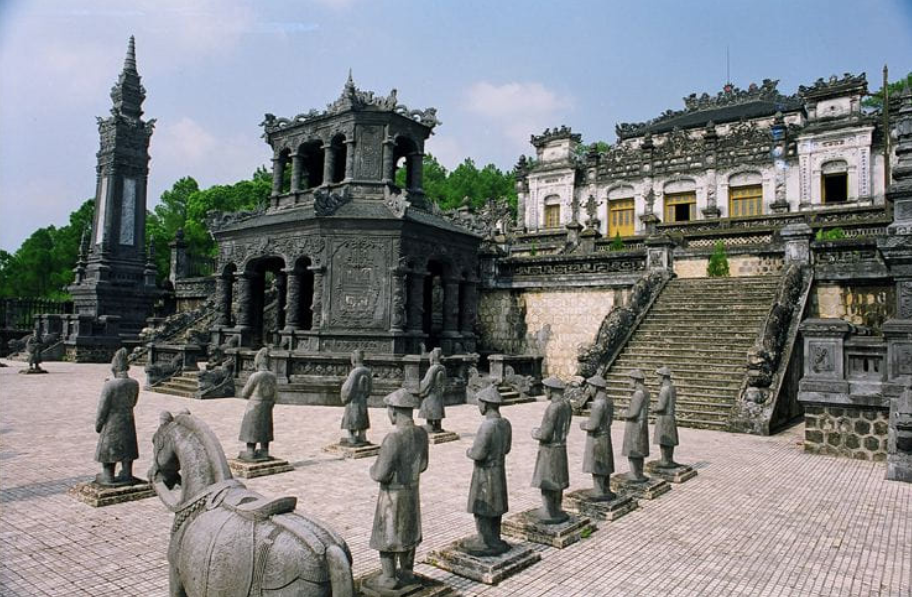 Photo by @lethuan
Photo by @lethuan
To fund the completion of the tomb, national taxes were raised to 30%. During this time, Vietnam's sovereignty was compromised under French colonial rule, and Western cultural influences permeated the country. Consequently, Khai Dinh’s tomb reflects a unique blend of Oriental and Occidental styles, incorporating Roman and Gothic elements, Hindu and Buddhist motifs, as well as features that meld ancient and modern aesthetics. It is also known as Ung Lang.
What To See
Despite its relatively small size, Khai Dinh Tomb is the most modern and costly of the Nguyen royal tombs. Khai Dinh opted for contemporary materials such as concrete, slate, and wrought iron, contributing to its striking gray and imposing appearance.
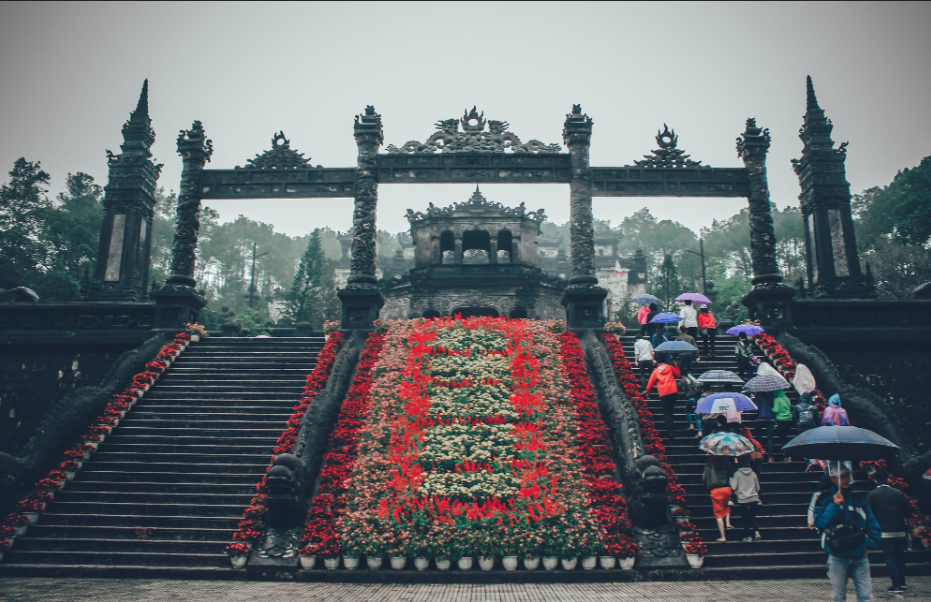 Photo by @anhtuan
Photo by @anhtuan
Initially, the main building showcases a prominent Western aesthetic; however, the surrounding landscape is meticulously arranged to embody traditional values, harmonizing wood, earth, water, and vegetation. The tomb features a grand rectangular structure consisting of 127 steps that rise against the mountain backdrop. The perimeter is adorned with some of the largest dragon sculptures in Vietnam. Upon climbing the stairs, visitors are greeted by the house of the epitaph, with statues depicting the mandarins, horses, and soldiers positioned in the courtyard.
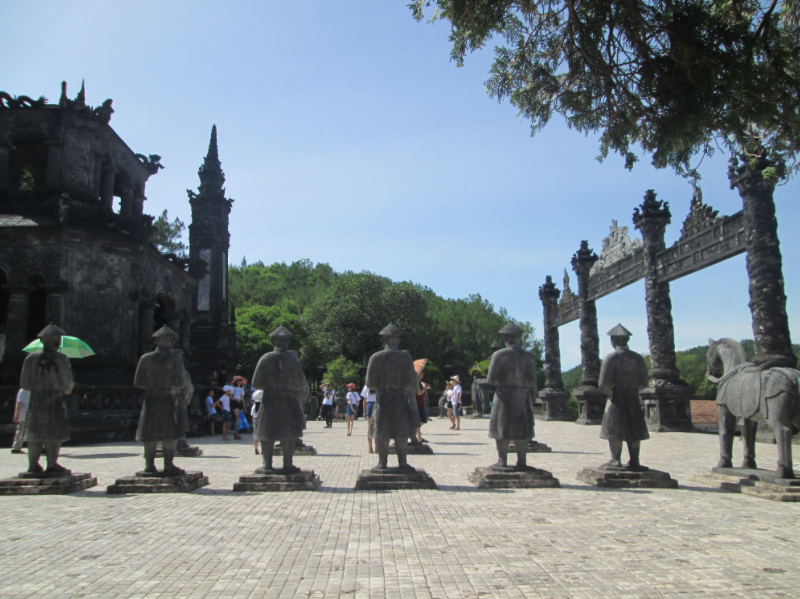 Photo by @BeTong
Photo by @BeTong
The focal point of Khai Dinh Tomb is the Thien Dinh Palace, which houses bronze statues and steles of the King. Its walls are intricately decorated with inlaid glass and porcelain designs. The standout feature of this room is the elaborate ceiling painting that depicts nine dragons weaving through swirling clouds. Inside the tomb, visitors will find two statues modeled after the King: one on the throne sculpted in Paris in 1920 by Ducuing and Barbedienne.
When To Get There
The tomb and its associated sites are open year-round. Entrance is free on major holidays, including the first day of the Lunar New Year and Vietnam's National Day on September 2nd. Khai Dinh Tomb is open from 7:30 AM to 5:30 PM.
How To Get There
The tomb is approximately 7 km from the center of Hue city. Travelers are encouraged to visit by motorbike, taxi, or on foot for a more immersive experience.
Useful Information
- Location: Lăng Khải Định, Huế
- Best for: Family, couple
- Entrance: Free
- Hours: 7:30 AM - 5:00 PM
- Distance to city center: 7.2km (4.5 mi)
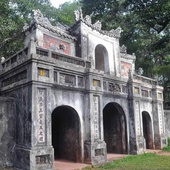
Tu Hieu Pagoda
In Hue - one of Vietnam's most sacred lands of Buddhism, Tu Hieu is regarded as the largest and oldest pagoda, and also a famous sightseeing spot with historical and cultural value.
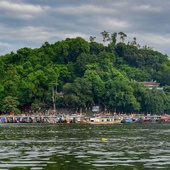
Hon Chen Temple
Hon Chen Temple is situated on a lovely slope of Ngoc Tran Mountain, 10km upstream from Hue Centre. The name “Ngoc Tran'' means Pearl Bowl, originating from the bowl-shape of the mountain. That also gives the temple its name: Hon Chen.
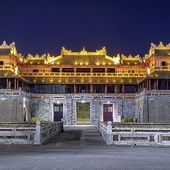
Hue Imperial Citadel
Famously being one of Vietnam’s seven UNESCO World Heritage Sites, the Imperial City of Hue has long been a must-see attraction for tourists visiting a hidden charm of Vietnam.








